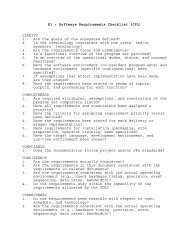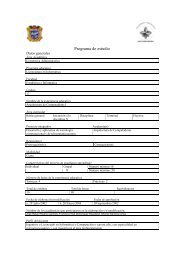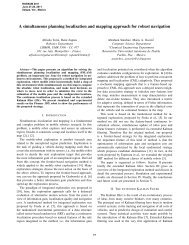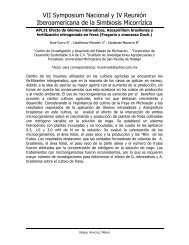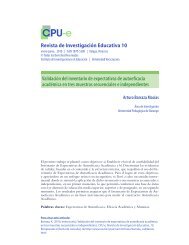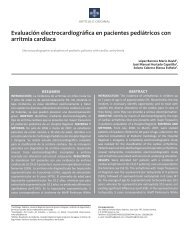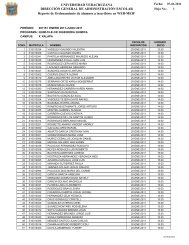Suplemento 2 Vol 8 No 1.indd - Universidad Veracruzana
Suplemento 2 Vol 8 No 1.indd - Universidad Veracruzana
Suplemento 2 Vol 8 No 1.indd - Universidad Veracruzana
Create successful ePaper yourself
Turn your PDF publications into a flip-book with our unique Google optimized e-Paper software.
46<br />
Revista Médica<br />
LA FUNCIÓN BIOLÓGICA DEL SUEÑO<br />
Humoral Regulation of Sleep; Implications for Sleep as an<br />
Emergent Use-Dependent Local Process<br />
James M. Krueger<br />
Sleep and Performance Research Center<br />
Program in Neuroscience<br />
Washington State University<br />
Krueger JM.<br />
Humoral Regulation of Sleep; Implications for Sleep as an Emergent Use-Dependent Local Process<br />
Rev Med UV 2008; Sup 2 8(1): 46-52.<br />
ABSTRACT<br />
Sleep is regulated in part by substances that are produced in<br />
response to wakefulness cellular activity. These substances in turn<br />
induce state changes in neural networks. Several of these sleep<br />
regulatory substances are well-characterized and include tumor<br />
necrosis factor (TNF), interleukin-1, adenosine, prostaglandin D , 2<br />
and growth hormone releasing hormone. This review is focused on<br />
TNF -sleep mechanisms. ATP co-released during neurotransmission<br />
induces the release of TNF from glia via purine P2 receptors. TNF<br />
acts directly on neurons to alter membrane potentials and gene<br />
expression of adenosine and glutamate receptors. Changes in the<br />
number of these receptors on neurons alter the sensitivities of<br />
the neurons. Thus the input-output relationships of the networks<br />
within which the neurons are located are changed. We posit that<br />
these events lead to state oscillations and these changes are thus<br />
use-dependent and local. The concept that cortical assemblies<br />
such as cortical columns oscillate between states has broad<br />
implications for sleep regulation, pathologies and function.<br />
Sleep deprivation is associated with enhanced sleepiness,<br />
sleep, and fatigue, increased sensitivity to pain and to<br />
kindling stimuli, reduced memory and cognitive function,<br />
and performance impairments. Chronic sleep loss is also<br />
associated with pathologies such as metabolic syndrome,<br />
chronic inflammation and cardiovascular disease. Multiple<br />
disease states are characterized by increases in sleep,<br />
sleepiness and fatigue including; sleep apnea, insomnia,<br />
excessive daytime sleepiness, AIDS, myocardial infarction,<br />
pre-eclampsia, post-dialysis fatigue, alcoholism, chronic<br />
fatigue syndrome, post-viral fatigue syndrome, rheumatoid<br />
arthritis and influenza viral infection. These disease states<br />
and sleep loss are all associated with enhanced circulating<br />
levels of cytokines such as tumor necrosis factor alpha<br />
(TNF) and interleukin-1 (IL1) 1 . There is also animal<br />
literature implicating these cytokines in physiological<br />
sleep regulation and in the sleep responses occurring after<br />
Revista Médica de la <strong>Universidad</strong> <strong>Veracruzana</strong> / <strong>Suplemento</strong> 2 <strong>Vol</strong>. 8 núm. 1, Enero - Junio 2008



